Omar Elgendy
Arabic Fake News Detection Based on Deep Contextualized Embedding Models
May 06, 2022

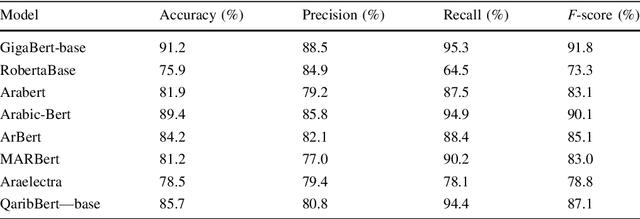

Abstract:Social media is becoming a source of news for many people due to its ease and freedom of use. As a result, fake news has been spreading quickly and easily regardless of its credibility, especially in the last decade. Fake news publishers take advantage of critical situations such as the Covid-19 pandemic and the American presidential elections to affect societies negatively. Fake news can seriously impact society in many fields including politics, finance, sports, etc. Many studies have been conducted to help detect fake news in English, but research conducted on fake news detection in the Arabic language is scarce. Our contribution is twofold: first, we have constructed a large and diverse Arabic fake news dataset. Second, we have developed and evaluated transformer-based classifiers to identify fake news while utilizing eight state-of-the-art Arabic contextualized embedding models. The majority of these models had not been previously used for Arabic fake news detection. We conduct a thorough analysis of the state-of-the-art Arabic contextualized embedding models as well as comparison with similar fake news detection systems. Experimental results confirm that these state-of-the-art models are robust, with accuracy exceeding 98%.
Breast cancer detection using artificial intelligence techniques: A systematic literature review
Mar 08, 2022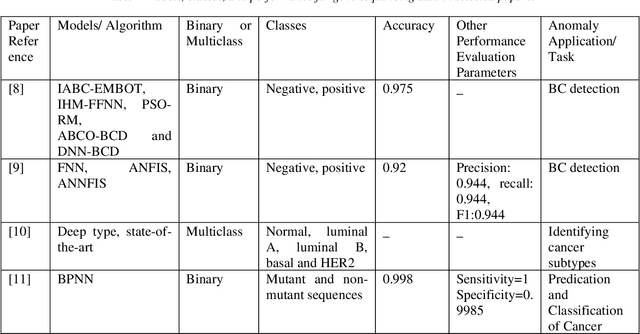
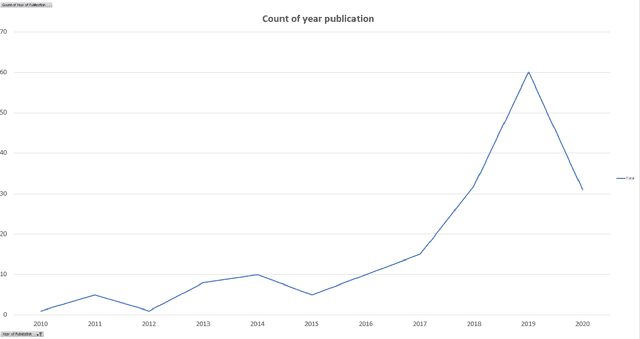
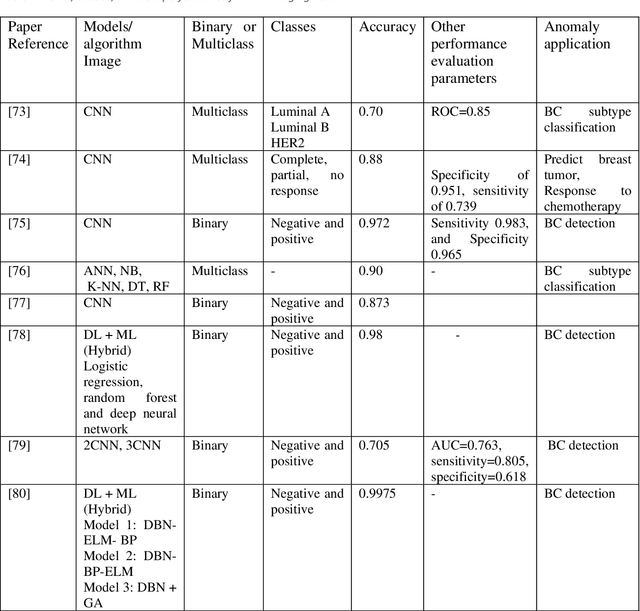
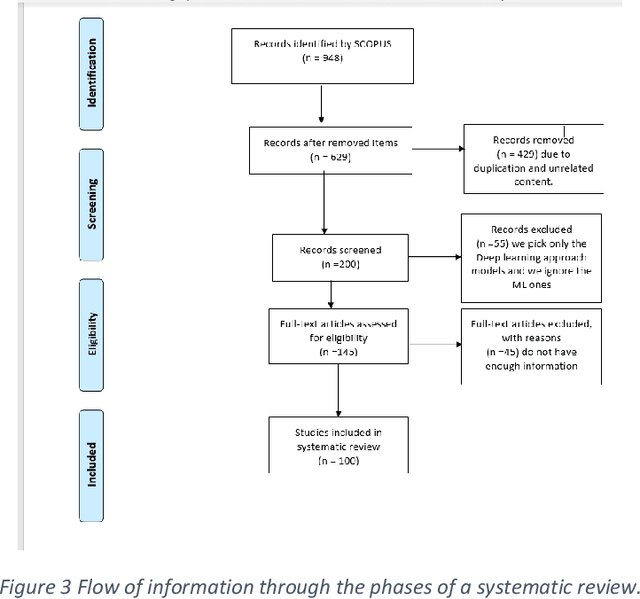
Abstract:Cancer is one of the most dangerous diseases to humans, and yet no permanent cure has been developed for it. Breast cancer is one of the most common cancer types. According to the National Breast Cancer foundation, in 2020 alone, more than 276,000 new cases of invasive breast cancer and more than 48,000 non-invasive cases were diagnosed in the US. To put these figures in perspective, 64% of these cases are diagnosed early in the disease's cycle, giving patients a 99% chance of survival. Artificial intelligence and machine learning have been used effectively in detection and treatment of several dangerous diseases, helping in early diagnosis and treatment, and thus increasing the patient's chance of survival. Deep learning has been designed to analyze the most important features affecting detection and treatment of serious diseases. For example, breast cancer can be detected using genes or histopathological imaging. Analysis at the genetic level is very expensive, so histopathological imaging is the most common approach used to detect breast cancer. In this research work, we systematically reviewed previous work done on detection and treatment of breast cancer using genetic sequencing or histopathological imaging with the help of deep learning and machine learning. We also provide recommendations to researchers who will work in this field
Megapixel Photon-Counting Color Imaging using Quanta Image Sensor
Mar 21, 2019



Abstract:Quanta Image Sensor (QIS) is a single-photon detector designed for extremely low light imaging conditions. Majority of the existing QIS prototypes are monochrome based on single-photon avalanche diodes (SPAD). Color imaging has not been demonstrated with single-photon detectors due to the intrinsic difficulty of shrinking the pixel size and increasing the spatial resolution while maintaining acceptable intra-pixel cross-talk. In this paper, we present image reconstruction of the first color QIS with a resolution of $1024 \times 1024$ pixels, supporting both single-bit and multi-bit photon counting capability. Our color image reconstruction is enabled by a customized joint demosaicing-denoising algorithm, leveraging truncated Poisson statistics and variance stabilizing transforms. Experimental results of the new sensor and algorithm demonstrate superior color imaging performance for very low-light conditions with a mean exposure of as low as a few photons per pixel.
Optimal Combination of Image Denoisers
May 30, 2018



Abstract:Given a set of image denoisers, each having a different denoising capability, is there a provably optimal way of combining these denoisers to produce an overall better result? An answer to this question is fundamental to designing ensembles of weak estimators for complex scenes. In this paper, we present an optimal procedure leveraging deep neural networks and convex optimization. The proposed framework, called the Consensus Neural Network (CsNet), introduces three new concepts in image denoising: (1) A deep neural network to estimate the mean squared error (MSE) of denoised images without needing the ground truths; (2) A provably optimal procedure to combine the denoised outputs via convex optimization; (3) An image boosting procedure using a deep neural network to improve contrast and to recover lost details of the combined images. Experimental results show that CsNet can consistently improve denoising performance for both deterministic and neural network denoisers.
 Add to Chrome
Add to Chrome Add to Firefox
Add to Firefox Add to Edge
Add to Edge